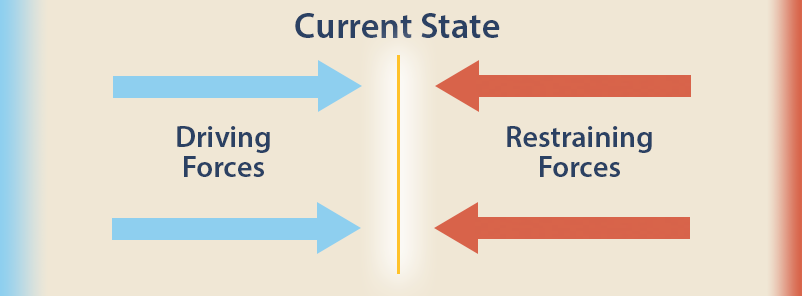Main Content
Lesson 4: Organization Diagnosis Model I
Organizational Diagnosis Model 1: Force Field Analysis (1951)
Kurt Lewin developed the force field analysis model in 1951 to effectively diagnose organizations in the change context.
- Using force field analysis, it becomes easier to understand the current situation and desired future.
- Identifying driving forces and restraining forces for a current state helps one understand what prompts the need for change.

Force Field Analysis Process
The following are steps to follow when conducting a force field analysis:
- Begin by clearly defining the current state. This is important, as it serves as a target for the analysis.
- Examine the driving (helping) forces and the restraining (hindering) forces for the current state.
- Compare the two different forces, prioritize their impact, and develop a goal after this analysis.
- Determine what, if any, sub-goals should be included. Driving forces can be strengthened by setting sub-goals that maintain or intensify them. Likewise, restraining forces can be avoided by making up for them. For example, if a restraining force was a lack of communication, a goal would be to facilitate communication.
- Once goals are identified, the final step is to develop strategies that minimize restraining forces and increase driving forces.
Again, OD practitioners facilitate the analysis process so that a maximum level of employee input is gathered, a consensus is reached, and strategies are developed by the members of the client group.
Video: Using the Force Field Analysis
This video clip is about how to use force field analysis, with an example of sales employees' performance issues.
Using the Force Field Analysis
